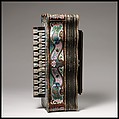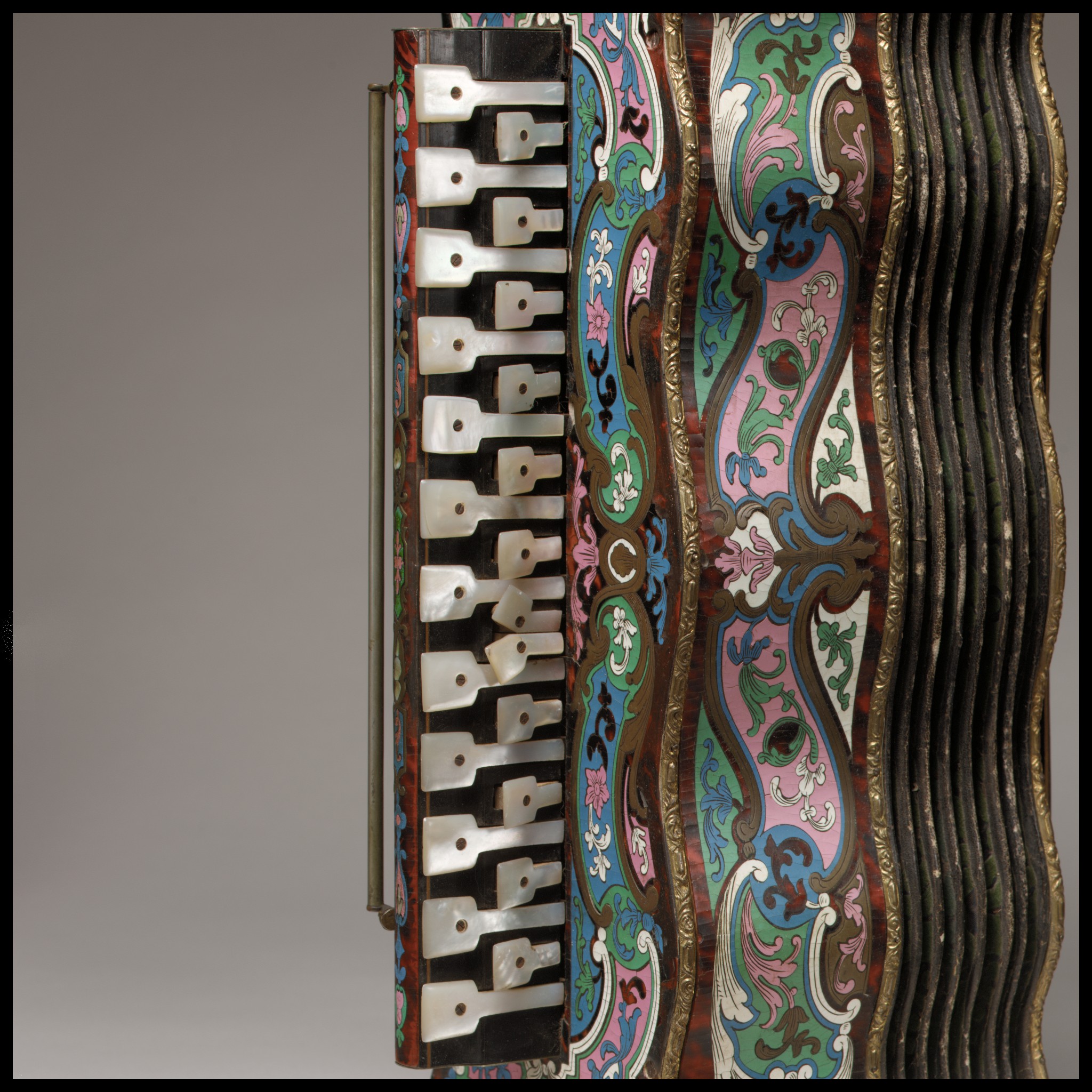Accordion
This instrument is profusely decorated with foliate designs in blue, green, pink and white enamel-like mastic with brass and tortoiseshell inlays. The twenty-four mother-of-pearl keys each operate two notes (one on push and a second on pull). The multifold bellows are lined with embossed silver foil bearing green flocking.
In the 1830s, Paris became a major center of accordion production, which flourished until the Franco-Prussian War of 1870-71. To compete with makers in Austria and Germany, Paris manufacturers successfully marketed their instruments by applying rich and costly decoration. This instrument follows a model by Demian of 1831, and is one of two surviving instrument of this type to have a second button row for the accidentals, it is therefore known as a "Paris accordions perfectionnes" or a "perfected" accordion. Only two such instruments are known to exist.
Due to rights restrictions, this image cannot be enlarged, viewed at full screen, or downloaded.
This artwork is meant to be viewed from right to left. Scroll left to view more.




